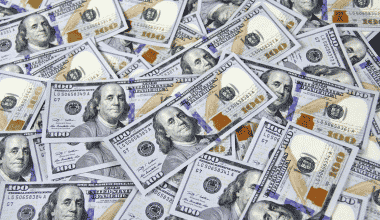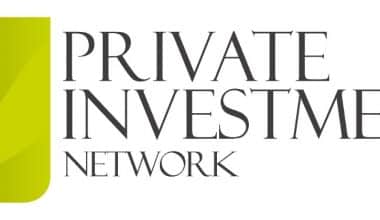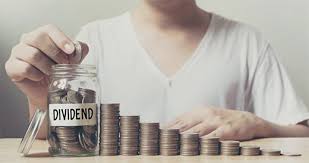No doubt, keeping a business engine of profit generation running requires continuous monetary investments. These investments may be made with “owned capital” (money provided by the company’s owners) or “shared capital.” Shared capital is money that a firm borrows from the general public in the marketplace in exchange for a dividend or a portion of the company’s ownership. This regular distribution of profits to stockholders is known as a “dividend.” Learn more as we’ll explain all you need to know about a dividend in regard to income, and stocks, with an example of how they are paid on shares.
What’s a Dividend?
A dividend is a payment that a company makes to its shareholders after consulting with the board of directors. It is a kind of reward—cash or stock—that a business delivers to its shareholders. Dividends may be distributed in a number of ways, including stock dividends, cash payments, and other forms. The board of directors of a firm determines its dividend, which requires shareholder approval. However, not all firms pay dividends, as it is not their obligation to do so.
A dividend is often a portion of the company’s profit paid quarterly and might take the form of cash payments or stock reinvestments. The dividend yield, which is the dividend per share, is stated as a percentage of the share price of a corporation, for example, 2.5%.
How Does a Dividend Work?
The distribution of dividends is subject to shareholder approval. Dividends are typically paid out in the form of cash. But they can also be distributed in the form of stock. Dividends are distributed by several different types of mutual funds and ETFs.
A dividend is the distribution of a portion of a company’s net income to its stockholders as a return on their investment. In addition to reinvesting in the company’s operations and growth, retained earnings provide a fund from which dividends can be paid to shareholders.
After meeting its debt obligations, a corporation may distribute a portion or all of its remaining profits to its shareholders in the form of dividend payments. However, it is possible for companies to forego dividend payments. This is in situations where they are experiencing a financial crunch or if they need the money for strategic expenditures. All shareholders who are on record as of the dividend record date will be entitled to receive dividend payments in accordance with their shareholdings. Within a week or so, the company will mail the investors’ checks.
According to a recent study, the percentage of dividend-paying companies in India dropped from 24% in 2001 to 16% in 2009 and then increased to 19% in 2010.
American tech giants Sun Microsystems, Cisco, and Oracle, among others, reinvest 100% of their profits back into the company rather than paying shareholders a dividend. The underlying value of a company’s stock is typically unaffected by dividend payments. High-growth companies that are still in the early stages of their enterprises, meanwhile, do not pay dividends. Instead, they prefer opting to reinvest the majority of their profits in order to maintain their rapid expansion. However, successful businesses often try to reward their investors with dividend payments on a regular basis.
Do Dividends Give You Money?
Owning shares in a firm through a brokerage account or retirement plan like an IRA entitles you to dividend payments from the company. Your dividends will be sent directly into your designated bank account at the time they are due.
What Is Dividend Stock?
A dividend stock is a form of payment where a company decides to reward its shareholders with additional shares rather than cash.
Distributions are made up of various fractions paid out for each existing share. For instance, if a firm decides to distribute a stock dividend of 5%, the company will pay the shareholder 0.05 additional shares for each share that the shareholder already possesses. The owner of 100 shares in this case would be eligible to get five more of those shares.
When a shareholder sells their shares, only then is the dividend income subject to taxation. Similar to stock splits, stock dividends lower the per-share value of the company’s stock because they result in the issuance of extra shares.
They have no influence whatsoever on the value of the company. In order for a firm to maintain its cash reserves, the company can decide that it is more advantageous to pay dividends in the form of stock rather than cash.
Why Purchase Dividend Stocks?
Dividend-paying stocks can offer a steady and expanding income source. Like any investment, dividends on common stock aren’t ever guaranteed. However, established businesses that are no longer required to reinvest as much capital into their operations are more likely to pay dividends.
Dividends are viewed as a sign of a business’s financial health. Investors anticipate that a dividend that a firm has established or increased will be kept, especially during difficult circumstances. If investors believe the dividend will be cut, they frequently undervalue a stock, which lowers the share price.
When inflation was high, according to Fidelity research, “stocks that increased their dividends the most outperformed the broad market, on average.”
The most dependable American corporations have a track record of increasing dividends for decades without cutting them. Exxon, Target, Apple, CVS, American Electric Power, and Principal Financial Group are a few firms that pay dividends. The dividend aristocrats, a select group of S&P 500 stock companies, have raised their dividends every year for at least 25 years. High-growth businesses, such as those in the tech or biotech industries, on the other hand, hardly ever pay dividends since they must reinvest revenues to accelerate that growth.
Dividend mutual funds and dividend exchange-traded funds (ETFs) may be of interest to investors who don’t want to conduct independent research or choose specific dividend stocks to invest in. These funds, which can accommodate a variety of financial situations, hold numerous dividend equities within a single investment and pay dividends to owners from those holdings.
What Is Dividend Income?
The IRS defines “dividend income” as any distribution of a company’s assets to its shareholders. While dividends are typically paid in cash, they can also be received in the form of stock or any other asset.
Dividend income has to do with the distribution of a company’s taxable profits to its investors. Consider a corporation that had a net income of $1.5 billion the previous year. It decided to reinvest $1.1 billion of that money, spending $350 million on a new facility and $750 million to buy out a rival. It chose to distribute $400 million in dividends to shareholders in order to repay its excess income to them because it already had a sound balance sheet and a sufficient cash reserve.
The majority of dividend payments are regarded by the IRS as taxable income. The dividend income that is taxed comes in two forms:
- Qualified dividends
- Nonqualified or ordinary dividends
The dividend payout is not directly proportional to the share price, but rather to the company’s profitability. Even if the market is going through a bad patch, the board of directors still has the choice to distribute dividends. Therefore, dividend-paying stock is often less susceptible to market volatility and share price fluctuations, and it may also qualify for preferential tax treatment. But not every company decides to hand out dividends.
Businesses that have consistently paid dividends over several decades tend to be those that have a reliable source of revenue. As a result, investors are attracted to companies that pay dividends, which drives up share prices. Some shareholders may choose to reinvest their earnings into the company, and others may not receive dividends if the company posts a loss.
Investors who want to make money find dividends to be attractive as well. However, dividends payments can affect a security’s price. And if companies with a long track record of dividends reduce payments suddenly, their dividend distributions would be bad for their stock prices.
But the stock price of companies that have increased their dividend payouts or adopted new dividend policies is likely to rise.
Investors place more value on a company’s shares if it pays dividends, as this is seen as a sign of the company’s health and a suggestion that management has high aspirations for future profits. The decision to distribute dividends is a clear indication of confidence in the future and success of the organization. The willingness and ability of a corporation to pay stable dividends over time is also indicative of its financial stability.
How Do I Get Paid My Dividends?
To be eligible to receive dividends on a stock, you must have ownership of shares in the company. You can accomplish this through a brokerage account or a retirement plan such as an individual retirement account (IRA). When the dividends are paid out, the money will be transferred into your account on its own accord automatically.
How Do You Make $100 a Month in Dividends?
You need at least 3 distinct stocks to create a dividend portfolio that pays you $100 in dividends each month. One for every quarterly payment schedule. Choose two stocks for each payment pattern if you have six equities. 9 dividend-paying equities, followed by 3 for each payout kind.
How to Get $500 a Month in Dividends?
You’ll need at least three distinct stocks in order to construct a dividend portfolio that will provide you with a monthly payout of $500. one in each of the four different payment arrangements that occur quarterly. You should choose two equities from each payment pattern if you have six different stocks. 9 equities that pay dividends, and then select three from each payout pattern
Dividend Example
When solving a problem involving division, dividends are a number that is required to be cut up into a predetermined number of equal pieces. When we split, say, forty apples among five people, the number forty is referred to as the dividend, and the number five is referred to as the divisor. This works just like the example we looked at earlier. 40 ÷ 5 = 4
If the board of directors of a firm makes the decision to pay an annual dividend of 5% per share and the company’s shares are now valued at $200 each, then the dividend will be $10. If dividends are paid out once every three months, then the amount of each payment will be $1.25.
Why Are Dividends Important?
Despite the fact that dividends might serve as a sign that a firm is producing profits and has a predictable cash flow, they can also serve as a source of recurrent revenue for investors. Payouts of dividends are another factor that can shed light on the intrinsic worth of a company. In a lot of nations, dividends get a special tax break and aren’t counted as taxable income at all. This is because governments want to encourage investment.
Conclusion
Dividends are not directly related to share prices because they are contingent on the company’s profitability. Even if the market is going through a bad patch, the board of directors may still choose to distribute dividends. Therefore, dividend-paying stock tends to be more stable through market fluctuations and share price swings, and it may also qualify for tax breaks. However, not every company will decide to distribute a dividend.
Companies with a long track record of dividend payments over the past few decades tend to be those with a reliable source of revenue. As a result, the demand for a company’s stock increases when dividends are paid out. Some shareholders may choose to reinvest their earnings into the company, and others may not receive dividends if the company posts a loss.
Related Articles
- DIVIDEND INVESTING: Meaning, How It Works, and Cons
- HOW DO STOCK DIVIDENDS WORK? Best 2023 Guide
- Best Dividend Funds 2023.
- TOP 25 DIVIDEND STOCKS in 2023 (Updated)
- DIVIDEND GROWTH STOCKS: High & Best Dividend Growth Stocks






